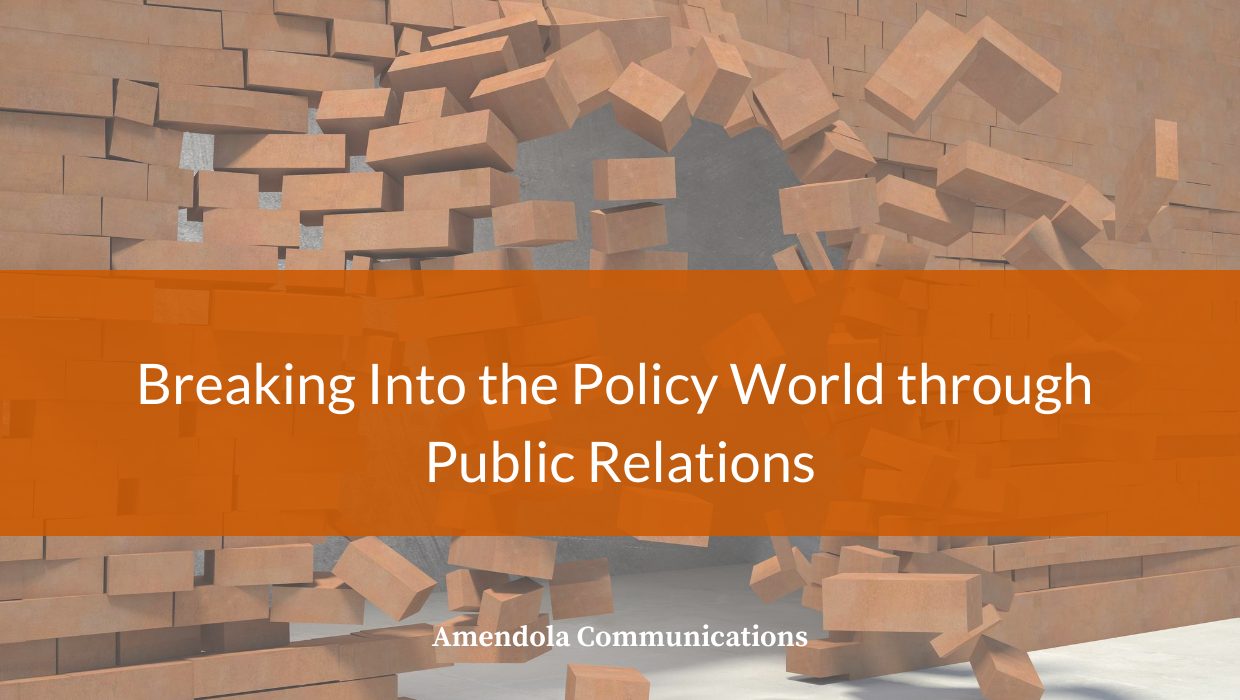Unless your organization happens to have an office in the Washington, D.C. bubble, engaging in federal policymaking can seem like a daunting task. Many organizations will understandably dismiss the opportunity to get involved in policy discussions because they simply just don’t know how.
Perhaps a congressional hearing is held on a topic that’s important to your organization, legislation is introduced that could significantly impact your business, or the Administration proposes sweeping regulatory changes to Medicare. You’re wondering, “What do we do? How do we have our voice heard without lobbyists or advocates? Where do we even begin?”
I’ve got news for you: you can influence policy without a lobby shop. Here are the first steps.
Find the right news sources
Before trying to engage in policy conversations, it’s essential that you educate yourself and stay up-to-date with policymakers relevant to your organization. First, scope out your primary sources: your congressional representatives and policymakers who sit on key committees. Follow them on social media, sign up for their e-newsletters, and perhaps most importantly, find out who works for them. Many people don’t realize the authority held by congressional staffers. They have an incredible amount of decision-making power and should not be dismissed as potential gateways into policy influence.
Next, find the most apt secondary news sources. Identify the trade, national, and local publications that frequently publish policy analyses, breaking news, or commentary (both critical and favorable) on your industry niche. Sign up for their e-newsletters or follow them on Twitter. Then, find and follow the journalists who cover policy happenings that align with your organization’s interests. With the constantly changing policy landscape and the increasing volatility of the media market, this is an ongoing process that requires dedication.
Lastly, get to know other key players in the industry. It’s important to keep tabs on organizations on the opposite side of a given policy issue, but it’s equally as important to build strategic alliances. Follow both the organization and its thought leaders on Twitter and sign up for their e-newsletters.
Build your network
It may seem difficult to build meaningful relationships in the middle of a pandemic, but that’s where soft skills come in handy. Get creative with your public relations efforts. Social media and email are your friends!
Once you’ve sufficiently tracked down all of your target policymakers, journalists, and stakeholders on Twitter, it’s time to start engaging. Build separate lists for each category. Devote time each day or every other day (even just 10 minutes) to reviewing your list feeds, retweeting, replying, and liking Tweets that are timely and relevant to your organization.
This can be done from an organizational account, but it’s far more effective and impactful if done from one or multiple thought leaders’ accounts. But remember – everything on Twitter should be considered on the record, particularly when you’re interacting with journalists. This shouldn’t deter you from engaging, but be cognizant of how your Tweets may be perceived.
Perhaps the most conventional way to make connections is via email. This tried and true method is even more common now that we are living in a largely digital professional world. Introduce yourself by email to your target stakeholders and set up a call to hear about their advocacy initiatives and various experiences and connections with policymakers. You may learn that there’s common ground for partnership or a larger alliance, or that certain policymakers are amenable to certain policy changes.
Before you can take the next step with policymakers and journalists, you must get your organization’s ducks in a row. Develop your policy position and strategy, prepare your spokespeople, and identify your allies and opposition. This can be an arduous process, but this critical foundation – on top of your policy knowledge and strategic connections – will pave the way for your organization to have a voice in policymaking.
Many organizations don’t recognize the value of a multifaceted public relations strategy. With public relations as a key component of your communications plan, your organization has the potential to penetrate the policy world through thought leadership, social influence, and earned media. Don’t miss out on the opportunity to increase brand awareness and industry visibility while improving your organization’s policy influence.
